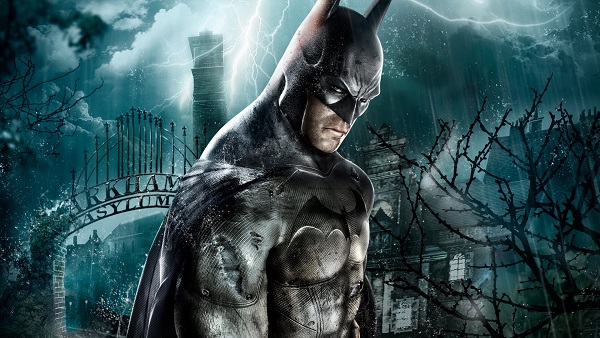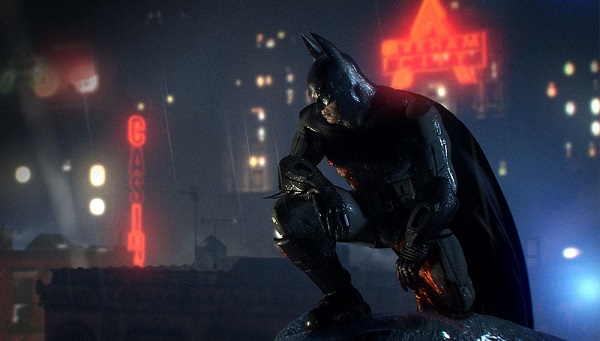
Batman: Arkham Series
Rocksteady/Warner Bros.
Eidos/Warner Bros.
PS3, PS4, Xbox 360, Xbox One, Wii U
You’ve got to feel sorry for Beenox.
Tasked with taking over the reigns of the Spider-man franchise from Treyarch, it was perhaps less pulling the plane out of a dive, more digging ol’ web-head up out of the ground and reanimating him. For years, Treyarch’s output had been precisely what people expected from a series of video games based on a comic book. Weird story lines that crammed as many characters as possible; corridors of identi-kit baddies; a horrible fighting system; bland graphics. The epitome of a 6/10.
Then along came Arkham Asylum, and in one fell swoop Rocksteady took what people expected from the genre and turned it on its head. The storyline was sleek and focused – Batman spends one night trapped on Arkham Island, forced to work his way through the asylum and its surroundings to take down the various prisoners that have escaped, and to ultimately stop his arch-nemesis Joker. It started where most games would end – with the bad guy behind bars – and only continued to usurp expectations. Was it any surprise that Spider-Man: Shattered Dimensions borrowed so heavily from Arkham Asylum? The Noir section of that game might as well have been lifted wholesale – and whilst Beenox’s output of late has been little better than Treyarch’s, that’s both a reflection of Activision’s release policy and an argument for another time.

Arkham Asylum, however, was a gorgeous game, with a solidly realized world and that wonderful Metroidvania-style gameplay; as Batman progressed through the asylum, he would unlock more and more gadgets, allowing him to access different parts of the island. And whilst the developers could have stuffed in a smorgasbord of the Dark Knight’s rogues gallery, they kept only the villains that suited the story. Nothing screams ‘cheap cash in’ more than a random nemesis popping up only to be smacked down and never seen again.
And of course, there was the combat. Truly, has there ever been a more copied-yet-never-bettered combo-system out there? Simple and fluid, it allowed the player to take on a room full of goons with a variety of gadgets and bone-breaking takedowns. Easy to pick up and mash, the true challenge lay in keeping the combo-meter going, flowing from one thug to the next without breaking the chain. The satisfaction gained from clearing a room of enemies without taking a single blow was immense.

But the real reason Rocksteady crafted such a fantastic game was because they truly understood the character they were building their world around. Batman isn’t just a brawler, walking from room to room beating people up. His weapon is fear. He skulks in the shadows, watching quietly from high above before picking his targets off one-by-one. And, incredibly, all of this survived intact; who could forget the simple joy of planting an explosive charge on a destructible wall, then waiting for a goon to walk by? Or dropping from a gargoyle and stringing up a henchman, then tossing a batarang to cut him down in front of his mates? With detective mode, it was even possible to track the erratic heart rates, whilst they visibly shook, firing off rounds at imaginary noises. Rocksteady didn’t just create an accurate Batman – they threw him into a sandbox and let the player go wild.
They then widened the scope of their game considerably with Arkham City two years later. Keeping the aesthetics and gameplay unchanged, their second round with the Caped Crusader saw a large chunk of Gotham turned into a prison. In essence a large expansion of the previous games challenge rooms, this time around players weren’t simply sitting on a high-beam watching the room below – they were sitting on a gargoyle monitoring police chatter. Smartly, Rocksteady kept the gradual unlocking of areas and buildings through the steady increase in Batman’s gadgets, and the fiendish Riddler trophies were back in full force. The narrative this time was more complex, and the cast of characters larger, as was befitting its new setting.

All of which is set to continue next year with the final entry in Rocksteady’s Bat-trilogy, Arkham Knight – which you can read our preview of here. And yes, it is a trilogy. The rather awkward release of Arkham Origins, a title not developed by Rocksteady but by Warner Bros. Montreal, is perhaps best quietly forgotten. An unnecessary prequel, it failed to prove its relevance with a story neither particularly interesting nor tied into the titles that came before it, squandering its opportunity to weave a fresh take on the first meeting between Batman and Joker. It’s telling that Rocksteady have avoided even mentioning it in any of their interviews or press statements.
And after Arkham Knight is done, what then? With rumours of Silver Age comics and the Justice League swirling, it will certainly be interesting to see where Rocksteady go next. But whilst many are hoping for a cameo from the wider DC Universe to point the way, only one thing’s for certain.
You’ve got to feel sorry for Beenox.

